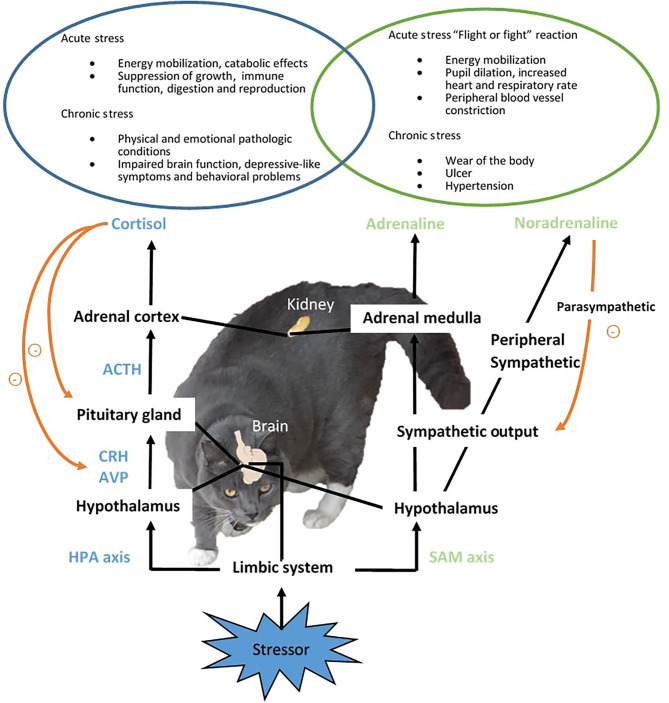Figure 1.
Stress response in cats. Upon the detection of an aversive stimulus or stressor, two major components of stress response, the sympathetic-adreno-medullar (SAM) and hypothalamic-pituitary-adrenal (HPA) axis will be activated, resulting in the release of mediating hormones, including mainly fast acting catecholamines from the SAM axis, and corticotropin-releasing hormone (CRH), arginine vasopressin (AVP), adrenocorticotropic hormone (ACTH) and cortisol from the HPA axis. The stress response coordinates physiological and behavioral changes to assist the restoring of organism homeostasis from the interference of stressors. When adaption is not achieved, sustained stress response can cause physiological and psychological pathological conditions.

